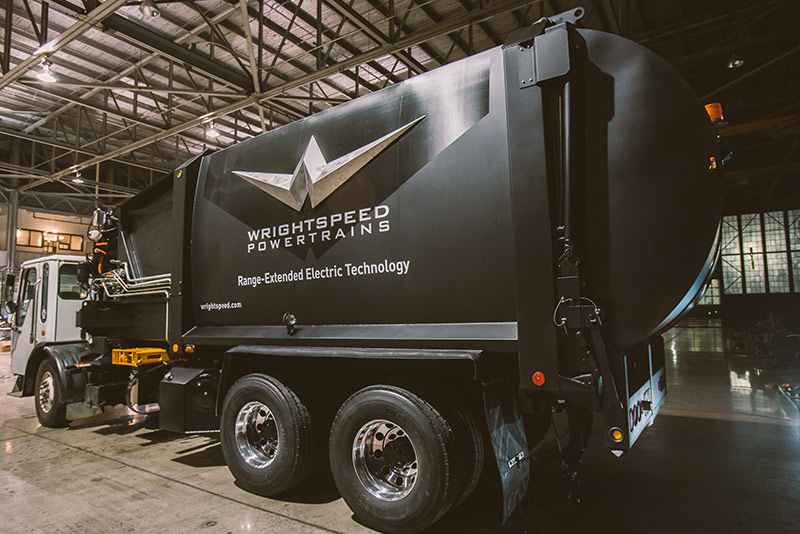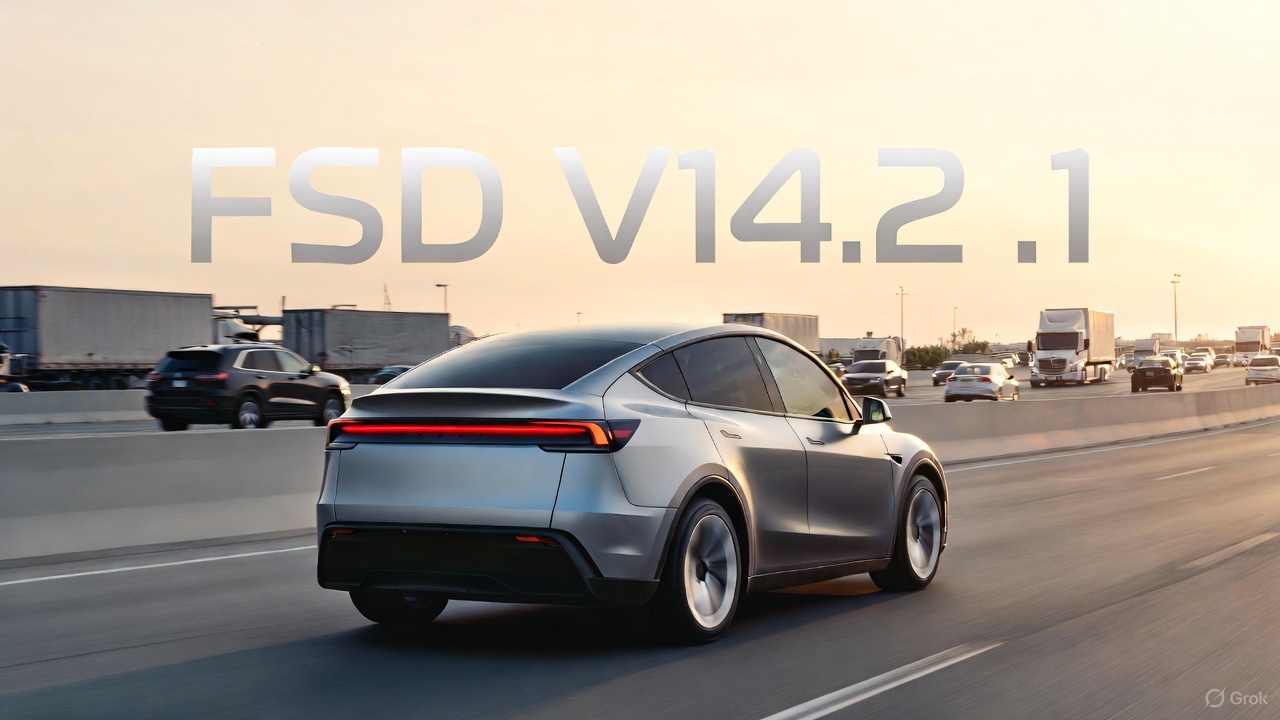News
Tesla co-founder unveils electric garbage truck

The global transition from combustion engine to all-electric vehicle continues to move into new sectors as Wrightspeed has just released its first fleet of range-extended electric refuse trucks. The powertrain represents a new era in vehicle propulsion, repowering a generation of lighter, quieter, and more efficient vehicle fleets for urban streets.
Wrightspeed’s commercial application of the range-extended, turbine-electric powertrain is the heavy-duty Class 8 Freightliner, which will be delivered to The Ratto Group, a Sonoma County solid waste collection and recycling business. The Class 8 Freightliner is the first of at least fifteen electric vehicles that will be integrated into the trash company’s fleet over the next year, according to Tim Dummer, Wrightspeed’s chief business officer. Dummer, an engineering and commercialization executive, was brought into Wrightspeed in October, 2016 as part of the company’s ramp-up of its Range-extended Electric Vehicle (REV) powertrain systems.
Called The Route™, Wrightspeed’s REV powertrain is optimized for the refuse industry and can be customized to fit a variety of today’s heavy-duty truck platforms, replacing both the engine and the transmission. Much of the growing demand for the award-winning The Route is due to Wrightspeed’s founder, Ian Wright, one of the original co-founders of Tesla Motors. After his departure from Tesla Motors in 2003, Wright had a vision that electric vehicles could deliver high-performance without compromising intrinsic efficiency. Using turbines and applying electric vehicle principles to urban, heavy-duty trucks, The Route powertrain was the result.
The Wrightspeed system can power a 66,000-pound GVW truck, delivering up to 24 miles on battery power before the range extender kicks in. After that, range is nearly unlimited as long as there is fuel for the turbine. With fuel efficiency the equivalent of up to 7 mpg in combined electricity-liquid fuel operation, the powertrain can slash annual fuel consumption by 70 percent or more compared with the average diesel refuse truck. CEO Lou Ratto says he expects a fuel savings of at least 50 percent.
Eventually, all of Ratto’s 130 residential trash and recycling trucks may be retrofitted with the turbine-electric powertrain. This is an ambitious undertaking, as a refuse truck’s demanding duty cycle drains an electric powertrain’s batteries quickly. Think start, then stop. Start, stop. Wrightspeed’s electric powertrain drives more low-end torque to the wheels than conventional diesel engines, with less fuel, emissions, and noise.
Wrightspeed, in a sense, is recycling Ratto’s trash collection trucks. The Wrightspeed/ Ratto contract is thought to be in the range of $3 million to $5 million.
A new refuse truck that meets all California air quality standards costs more than $500,000, so Wrightspeed’s retrofit of Ratto’s existing trucks makes the system more cost-effective, Van Amburg relates. Sonoma County officials like the trash fleet electrification program because they see it as a means of improving local air quality, says Efren Carrillo, chairman of the Sonoma County Board of Supervisors. Ratto concurs. “Here in Sonoma County there is a lot of environmental consciousness, and we are always looking for ways to be cleaner, environmentally friendly, and help the bottom line. And the idea that [by electrifying the trucks] we can do this and get off the air quality rollercoaster and stop battling to meet California emissions requirements— that makes it all worthwhile.”
ALSO SEE: The Tesla Semi will shake the trucking industry to its roots
Wrightspeed featured its powertrain technology alongside Mack Trucks at Waste Expo 2016 in Las Vegas and signed a $30+ million agreement with NZ Bus, symbolizing multinational and multimodal demand for Wrightspeed’s powertrain technology. In June, the company was named a Technology Pioneer by the World Economic Forum (WEF), and CEO Wright was an invited presenter to the International Business Council of the World Economic Forum. He will be a keynote speaker at the upcoming SAE 2016 Range Extenders for Electric Vehicles Symposium in Knoxville, 2-3 November, 2016.

News
Tesla FSD V14.2.1 is earning rave reviews from users in diverse conditions
Tesla’s Full Self-Driving (Supervised) software continues its rapid evolution, with the latest V14.2.1 update drawing widespread praise.

Tesla’s Full Self-Driving (Supervised) software continues its rapid evolution, with the latest V14.2.1 update drawing widespread praise for its smoother performance and smarter decision-making.
Videos and firsthand accounts from Tesla owners highlight V14.2.1 as an update that improves navigation responsiveness, sign recognition, and overall fluidity, among other things. Some drivers have even described it as “more alive than ever,” hinting at the system eventually feeling “sentient,” as Elon Musk has predicted.
FSD V14.2.1 first impressions
Early adopters are buzzing about how V14.2.1 feels less intrusive while staying vigilant. In a post shared on X, Tesla owner @LactoseLunatic described the update as a “huge leap forward,” adding that the system remains “incredibly assertive but still safe.”
Another Tesla driver, Devin Olsenn, who logged ~600 km on V14.2.1, reported no safety disengagements, with the car feeling “more alive than ever.” The Tesla owner noted that his wife now defaults to using FSD V14, as the system is already very smooth and refined.
Adverse weather and regulatory zones are testing grounds where V14.2.1 shines, at least according to testers in snow areas. Tesla watcher Sawyer Merritt shared a video of his first snowy drive on unplowed rural roads in New Hampshire, where FSD did great and erred on the side of caution. As per Merritt, FSD V14.2.1 was “extra cautious” but it performed well overall.
Sign recognition and freeway prowess
Sign recognition also seemed to show improvements with FSD V14.2.1. Longtime FSD tester Chuck Cook highlighted a clip from his upcoming first-impressions video, showcasing improved school zone behavior. “I think it read the signs better,” he observed, though in standard mode, it didn’t fully drop to 15 mph within the short timeframe. This nuance points to V14.2.1’s growing awareness of temporal rules, a step toward fewer false positives in dynamic environments.
FSD V14.2.1 also seems to excel in high-stress highway scenarios. Fellow FSD tester @BLKMDL3 posted a video of FSD V14.2.1 managing a multi-lane freeway closure due to a police chase-related accident. “Perfectly handles all lanes of the freeway merging into one,” the Tesla owner noted in his post on X.
FSD V14.2.1 was released on Thanksgiving, much to the pleasant surprise of Tesla owners. The update’s release notes are almost identical to the system’s previous iteration, save for one line item read, “Camera visibility can lead to increased attention monitoring sensitivity.”
News
Tesla FSD Supervised ride-alongs in Europe begin in Italy, France, and Germany
The program allows the public to hop in as a non-driving observer to witness FSD navigate urban streets firsthand.

Tesla has kicked off passenger ride-alongs for Full Self-Driving (Supervised) in Italy, France and Germany. The program allows the public to hop in as a non-driving observer to witness FSD navigate urban streets firsthand.
The program, detailed on Tesla’s event pages, arrives ahead of a potential early 2026 Dutch regulatory approval that could unlock a potential EU-wide rollout for FSD.
Hands-Off Demos
Tesla’s ride-along invites participants to “ride along in the passenger seat to experience how it handles real-world traffic & the most stressful parts of daily driving, making the roads safer for all,” as per the company’s announcement on X through its official Tesla Europe & Middle East account.
Sign-ups via localized pages offer free slots through December, with Tesla teams piloting vehicles through city streets, roundabouts and highways.
“Be one of the first to experience Full Self-Driving (Supervised) from the passenger seat. Our team will take you along as a passenger and show you how Full Self-Driving (Supervised) works under real-world road conditions,” Tesla wrote. “Discover how it reacts to live traffic and masters the most stressful parts of driving to make the roads safer for you and others. Come join us to learn how we are moving closer to a fully autonomous future.”
Building trust towards an FSD Unsupervised rollout
Tesla’s FSD (Supervised) ride-alongs could be an effective tool to build trust and get regular car buyers and commuters used to the idea of vehicles driving themselves. By seating riders shotgun, Tesla could provide participants with a front row seat to the bleeding edge of consumer-grade driverless systems.
FSD (Supervised) has already been rolled out to several countries, such as the United States, Canada, Australia, New Zealand, and partially in China. So far, FSD (Supervised) has been received positively by drivers, as it really makes driving tasks and long trips significantly easier and more pleasant.
FSD is a key safety feature as well, which became all too evident when a Tesla driving on FSD was hit by what seemed to be a meteorite in Australia. The vehicle moved safely despite the impact, though the same would likely not be true had the car been driven manually.
News
Swedish union rep pissed that Tesla is working around a postal blockade they started
Tesla Sweden is now using dozens of private residences as a way to obtain license plates for its vehicles.

Two years into their postal blockade, Swedish unions are outraged that Tesla is still able to provide its customers’ vehicles with valid plates through various clever workarounds.
Seko chairman Gabriella Lavecchia called it “embarrassing” that the world’s largest EV maker, owned by CEO Elon Musk, refuses to simply roll over and accept the unions’ demands.
Unions shocked Tesla won’t just roll over and surrender
The postal unions’ blockade began in November 2023 when Seko and IF Metall-linked unions stopped all mail to Tesla sites to force a collective agreement. License plates for Tesla vehicles instantly became the perfect pressure point, as noted in a Dagens Arbete report.
Tesla responded by implementing initiatives to work around the blockades. A recent investigation from Arbetet revealed that Tesla Sweden is now using dozens of private residences, including one employee’s parents’ house in Trångsund and a customer-relations staffer’s home in Vårby, as a way to obtain license plates for its vehicles.
Seko chairman Gabriella Lavecchia is not pleased that Tesla Sweden is working around the unions’ efforts yet again. “It is embarrassing that one of the world’s largest car companies, owned by one of the world’s richest people, has sunk this low,” she told the outlet. “Unfortunately, it is completely frivolous that such a large company conducts business in this way.”
Two years on and plates are still being received
The Swedish Transport Agency has confirmed Tesla is still using several different workarounds to overcome the unions’ blockades.
As noted by DA, Tesla Sweden previously used different addresses to receive its license plates. At one point, the electric vehicle maker used addresses for car care shops. Tesla Sweden reportedly used this strategy in Östermalm in Stockholm, as well as in Norrköping and Gothenburg.
Another strategy that Tesla Sweden reportedly implemented involved replacement plates being ordered by private individuals when vehicles change hands from Tesla to car buyers. There have also been cases where the police have reportedly issued temporary plates to Tesla vehicles.









